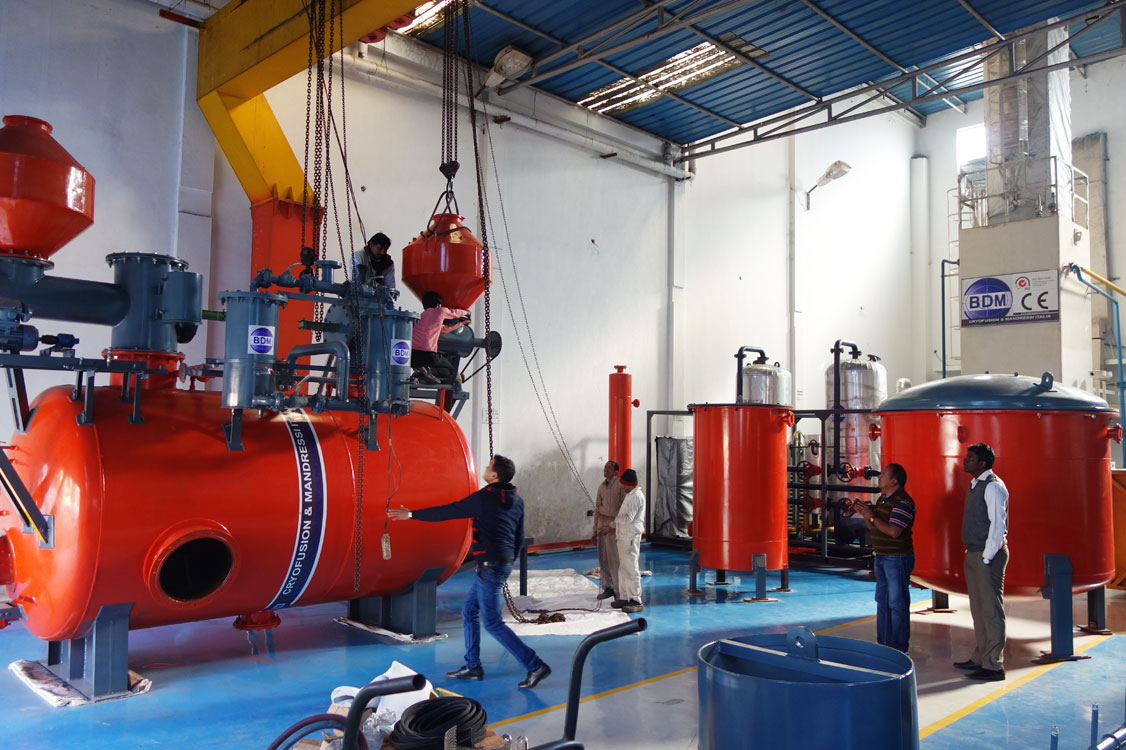- A-29, Industrial Area, Site IV,
Sahibabad, Ghaziabad, UP, India. - (+91-120) 2896063
info@bhartiyagroups.com


An acetylene plant is a process plant that converts different hydrocarbon gases such as natural gas, propane, butane and others into acetylene. It is the world's fastest growing gas and used mainly in the manufacture of aluminum and steel.
Acetylene plants are not fired by natural gas. They are fired by fuel oil or other fuels that generate high-pressure steam. An important product of an acetylene plant is pure hydrogen, which can be used for special steels and for deoxidizing cast iron to reduce patterns in it. It is also used in the petrochemical industry as a raw material and fuel. The presence of carbon and hydrogen in the feedstock provides the necessary raw materials for an acetylene plant to produce ethylene and then plastics.
Industrial acetylene is produced in a large plant called the acetylene plants. In these facilities, acetylene is reacted with water and limestone in an electrolytic cell. The cells are lined with graphite electrodes, so only carbon dioxide and water vapor exit the reaction chamber. After leaving the chamber, the gases from each reaction chamber are cooled and condensed into liquid acetylene tanks. From there they may be transported to other locations via pipelines or rail cars.
An acetylene plant catalytically decomposes hydrocarbons, using one or more Lindlar catalyst beds. The typical feedstock is natural gas. This can be supplied either as a pipeline pure stream, or from a gas oil cracking refinery as butane, propane, ethane and other natural gas liquids. The product stream is mostly acetylene (greater than 95%) with methane, ethane and water. A downstream fractionating column separates acetylene from the other gases produced in the plant, which are recycled back to the process.
The acetylene plant is a crucial component of steel mills, aluminium smelters, and other industrial plants that make use of this flammable gas. The plant produces acetylene through a reaction between calcium carbide, air, and water for use in welding and cutting applications.
Smooth operation, high efficiency, great uptime and reduced wear-and-tear are critical to the long-term success of your acetylene plant. So it's important to choose a trusted partner when you need engineering, design and supply services for systems that make and manage acetylene gas. That's why our engineers at the Bhartiya Cryogas have designed an industry-leading acetylene gas making system for maximum safety and performance.
Bhartiya Cryogas is one of the leading manufacturers and suppliers of Acetylene Plants. Our fully automatic Acetylene plants are available in capacities from 25m3/hr to 200m3/Hr. In a Stationary Carbide to Water type Automatic Acetylene Generator acetylene is produced by reaction of calcium carbide with water. Adequate quantity of water is held in the generator shell to which calcium carbide is fed from top. The Ca(O 2 ) crystals go into slaking with water and they crack into CaCO 3 and CO 2 . In the process of slaking, oxygen is released and it causes ignition of Ca(O 2 ) slakes contained in the generator shell. The heat generated in this way heats the water, which continues the reaction between Ca(O 2 ) and the water, resulting in generation of acetylene gas.
Acetylene Gas Cylinder, Acetylene Plant, Acetylene Plant in India, Acetylene Generator, Bhartiya Cryogas, C2H2, Hi Tech Acetylene Plant, Acetylene Gas Cylinder, Acetylene Generator, Acetylene







